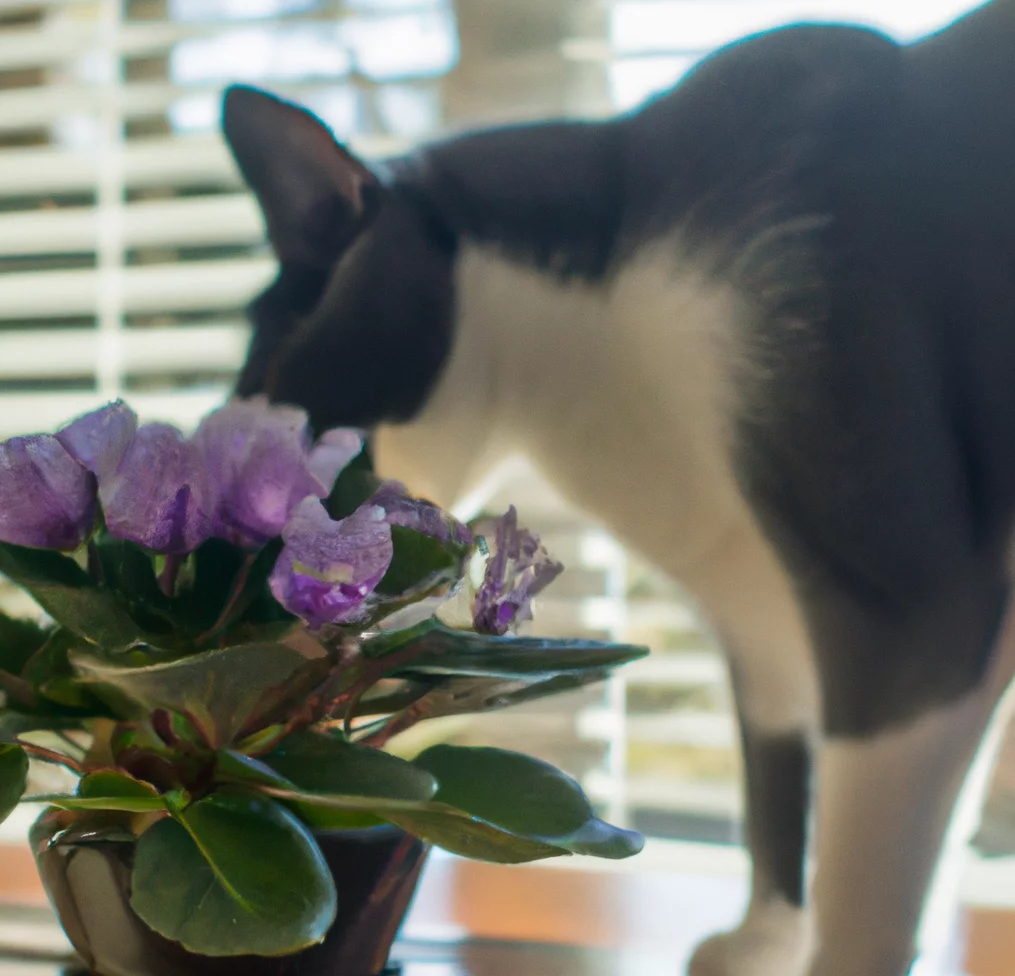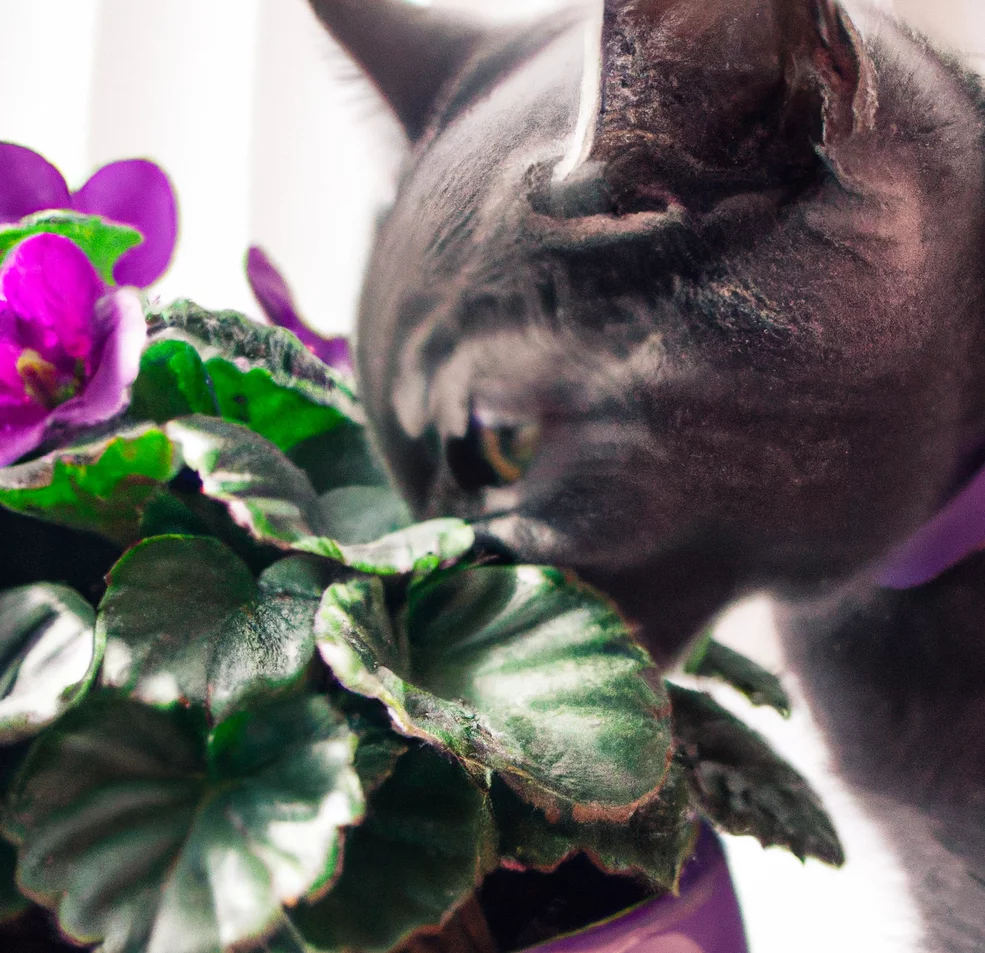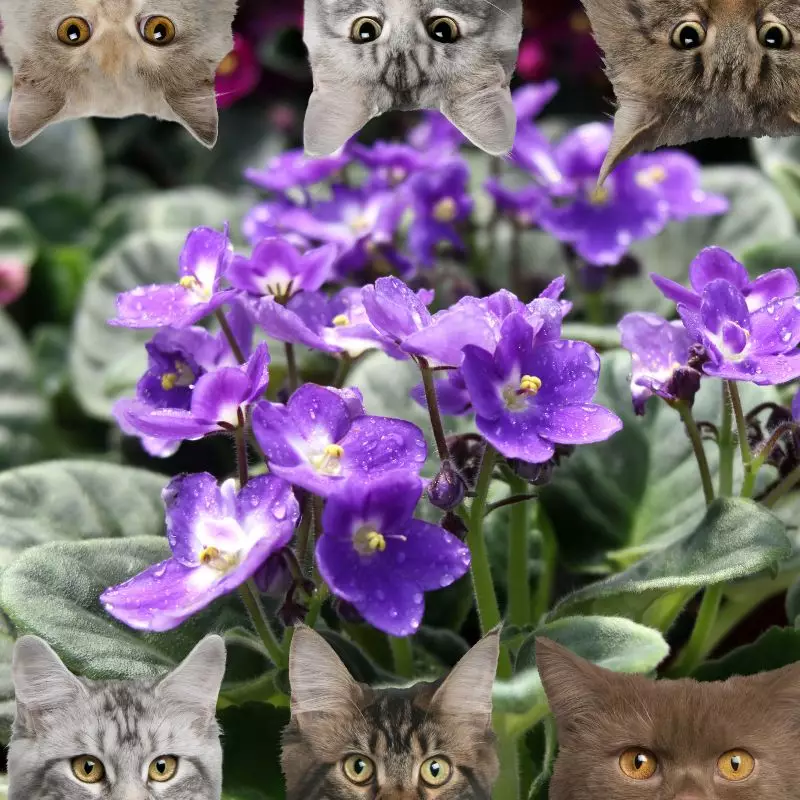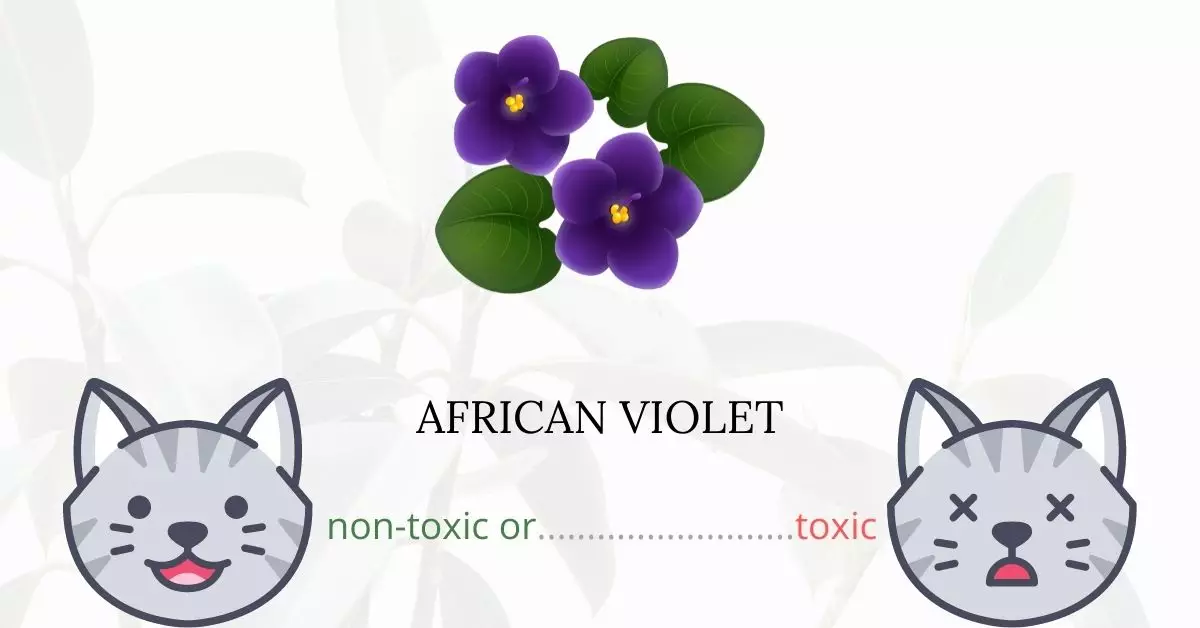No, African violets are not toxic to cats, as affirmed by the American Society for the Prevention of Cruelty to Animals (ASPCA) Poison Control Center.
This article is penned in partnership with a cadre of seasoned Doctors of Veterinary Medicine (DVMs), whose invaluable insights enable us to deliver precise and contemporary information on the conceivable risks presented by various plants, focusing on African Violets in this instance, and their impacts on cats. In addition to the expertise provided by our collaborating veterinarians, we have consulted high-authority websites, such as ASPCA and PetMD, to ensure a comprehensive understanding of each plant discussed.
Although African violets are classified as safe for cats, it is paramount for cat owners to be aware of and contemplate certain factors before allowing their feline friends to interact with or ingest African violets.
Can Cats Eat African Violet?

Cats are curious creatures. They tend to try touching, licking and nibbling on things that they find interesting around them — plants are not an exception.
In case your cat nibbled on a portion of African violet, you should not worry as the plant does not contain toxic properties that can harm your cat. However, using fertilizer, insecticides, and other products with chemicals on an African violet may cause harm to your cat if he or she has ingested the plant.
What is African Violet?

Scientifically known as Saintpaulia, African violet is a Gesneriaceae family herbaceous perennial flowering plant. This tropical African native plant is typically used as an indoor houseplant, although it may also be kept outside at certain temperatures.
African violets may reach a height of 6 to 15 centimeters and a width of 6 to 30 centimeters. It has fleshy leaves that are rounded to oval in shape and have a 2 to 10 cm petiole. The velvety corolla flowers have five lobes and grow in groups of three to ten or more on slender stalks called peduncles. Flowers can be violet, purple, pale blue, or white in wild species.
In 1983, the plant species S. ionantha, was introduced to Germany. Since then, thousands of Saintpaulia variants have been produced. Single and double African violet flowers, as well as a range of colours and leaf styles, are now available.
Because of their superficial similarity to actual violets, the plants got the name “African violets.”
Keeping Cats Away From African Violet

Cats do not have adequate enzymes to digest plant items since they are carnivores. As a result, too much eating of a plant can produce gastrointestinal problems including vomiting and diarrhea.
While African violets are not hazardous to your feline friends, it is still a good idea to keep them away from them to avoid ailments or negative health consequences.
Train your cat to avoid plants in the yard and in the outdoors. You may also try wrapping aluminium foil around your garden plants. Touching or stepping on aluminium foil gives cats the crinkly feeling and sound they despise.
Plants to Avoid For Your Cats
If you are a cat parent and not sure if the plants growing in your yard are harmful to your cats, you may refer to our list of toxic plants for cats. You may also check our list of non-toxic plants for cats.





